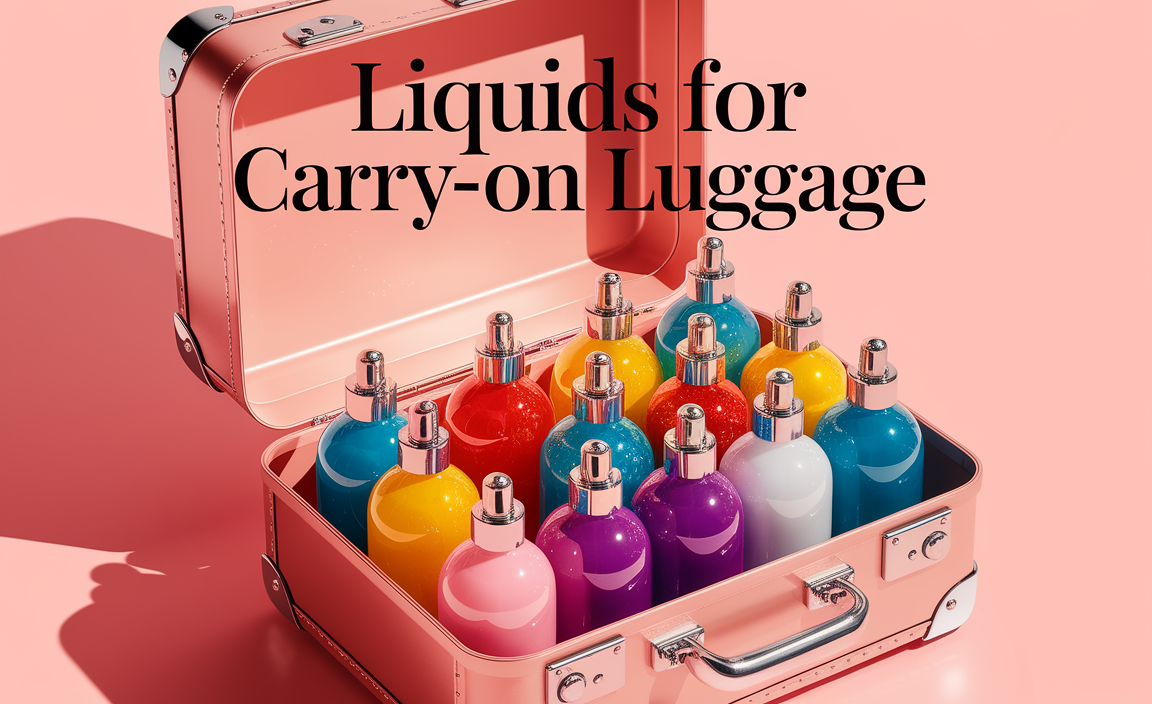Australia Public Transport Cheat Sheet: Essential Guide
Navigate Australia’s public transport with ease! This guide covers everything from Opal cards in Sydney to Myki in Melbourne, offering tips on ticketing, apps, and etiquette for stress-free travel across the country. Get ready for smooth journeys!
Australia is a vast and beautiful continent, perfect for exploring. But getting around, especially if you’re new to the country or haven’t traveled much with family, can seem a bit daunting. Public transport is a fantastic, cost-effective way to see cities and even connect between them. However, each major city often has its own unique system for fares, cards, and rules. It’s enough to make anyone feel a little overwhelmed!
But don’t worry! This guide is your cheat sheet. We’ll break down the essentials for navigating public transport in Australia’s major cities. You’ll learn about the ticketing systems, how to buy fares, and what to expect. With this information, you can travel with confidence and save your energy for enjoying the sights.
Understanding Australia’s Public Transport Landscape
Australia’s public transport offers a diverse range of services, generally well-maintained and efficient. You’ll find extensive networks of trains, buses, trams, and ferries in its major capital cities. The key to unlocking this network for an affordable and convenient journey lies in understanding their specific ticketing systems. Forget bulky paper tickets; most Australian cities have embraced smart card technology for easy tap-on, tap-off convenience.
While the overarching concept of public transport is similar nationwide, the specific names, card types, and apps vary significantly from state to state and even city to city. This can be a common point of confusion for first-time visitors. Our goal is to demystify these differences for you.
The Smart Card System: Your Key to Travel
The most prevalent ticketing method across Australia’s major cities is the use of reusable smart cards. These cards hold your travel credit and allow you to tap on and off services. This system is designed for speed and convenience, eliminating the need to buy individual tickets for each journey.
Here’s a quick look at the major smart cards you’ll encounter:
- Opal: Sydney (New South Wales)
- Myki: Melbourne (Victoria)
- Go Card: Brisbane (Queensland)
- Metrocard: Adelaide (South Australia)
- SmartRider: Perth (Western Australia)
Each of these cards works on similar principles, but the way you purchase them, top them up, and the fare structures can differ.
Navigating Sydney: The Opal Card
Sydney, the first city many visitors explore, uses the Opal card system. It’s your all-in-one pass for trains, buses, light rail, and ferries within the greater Sydney area and surrounding regions.
Getting an Opal Card
You can get an Opal card in a few ways:
- Opal Retailer: Purchase and top up at thousands of locations, including convenience stores, pharmacies, and supermarkets displaying the Opal logo. Look for the tell-tale Opal sign.
- Online: Order a card online from the Transport for NSW website. Allow a few days for delivery if you’re not arriving immediately.
- Station Ticket Offices: Traditional ticket offices at some major train stations can also issue Opal cards.
- App: You can now use a virtual Opal card on your smartphone for many journeys, making it even more convenient.
Topping Up Your Opal Card
Keeping your Opal card ready for your next trip is easy:
- Retailers: Top up with cash or card at any Opal retailer.
- Online: Manage your account and top up via the Opal website or app.
- Station Vending Machines: Some stations have machines where you can add credit.
- Auto Top Up: Set up automatic top-ups to ensure you always have sufficient balance. This is a great option for families or longer stays.
Opal Fares and Benefits
Opal fares are generally cheaper than single paper tickets. Sydney’s system also includes daily and weekly fare caps, meaning once you spend a certain amount in a day or week, the rest of your travel for that period is free. This is a fantastic benefit for heavy travelers!
Key benefits of Opal:
- Cheaper Fares: Tap on and off for significantly lower prices than single tickets.
- Free Travel Benefits: Daily and weekly fare caps mean your travel becomes free after a certain spend.
- Transfer Discount: If you switch between different modes of transport (e.g., train to bus) within a set time, you get a discount on your second trip.
- Weekend and Off-Peak Travel: Cheaper fares often apply during off-peak hours and on weekends.
Using Your Opal Card
Simply tap your Opal card on the reader at the start of your journey (e.g., at a station gate, bus entry point) and tap off at your destination. Make sure to tap off correctly, or you might be charged the maximum fare.
Exploring Melbourne: The Myki Card
Melbourne, known for its trams, trains, and buses, uses the Myki card. This is another smart card system designed to simplify travel within the Public Transport Victoria (PTV) network.
Getting Your Myki Card
You can obtain a Myki card from:
- Myki Retailers: Available at many convenience stores, supermarkets, and newsagents.
- Myki Vending Machines: Found at most train stations and some larger tram stops.
- Myki Website: Order online from Public Transport Victoria.
- PTV Hubs: Located at major stations like Southern Cross and Flinders Street.
Topping Up Your Myki Card
Keeping your Myki topped up is straightforward:
- Retailers: Top up with cash or card at any Myki retailer.
- Vending Machines: Easy to use machines at stations.
- Online: Manage your account and top up via the PTV website or the PTV app.
- Auto Top Up: Set up automatic reloads for continuous travel.
Myki Fares and Travel Zones
Melbourne’s Myki system uses a zone-based fare structure. Most of the central city and inner suburbs are in Zone 1. Traveling into outer suburbs might take you into Zone 2, and fares differ accordingly.
Myki fare types:
- Full Fare: For adults without concession entitlements.
- Concession Fare: For eligible concession card holders (students, pensioners, etc.).
- Child Fare: For children aged 5-16. Children under 5 travel free.
Unlike Sydney’s Opal, Melbourne’s Myki doesn’t have a daily fare cap for unlimited travel in the same way. However, it does have a 2-hour fare and a daily fare, which are the maximum you’ll pay for travel within a specified period. The Myki Touch Card also offers free travel on trams within the Melbourne CBD Free Tram Zone.
Remember to touch your Myki card to the reader every time you board a train, tram, or bus.
Brisbane’s Go Card
For those venturing to Queensland’s capital, Brisbane, and its surrounding areas, the Go Card is your ticket. It covers services managed by TransLink, including trains, buses, ferries, and light rail.
Getting a Go Card
You can secure a Go Card:
- Go Card Retailers: Available at many convenience stores, pharmacies, and newsagents.
- Go Card Vending Machines: Found at train stations and some major bus interchanges.
- Online: Order from the TransLink website.
- Phone: You can request a Go Card via phone.
Topping Up Your Go Card
Keeping your Go Card credit up is simple:
- Retailers: Top up with cash or card.
- Vending Machines: Use the machines at stations.
- Online: Manage your Go Card and top up through the TransLink website.
- Auto Top Up: Automatic reloads are available.
Go Card Fares and Benefits
Go Card fares are cheaper than single paper tickets, and the system encourages travel with:
- Grab & Go Ticket: For occasional travelers, this is a printed ticket with pre-loaded credit.
- Free Trams: A free tram service operates within the CBD.
- Concessions: Various concession and child fares are available.
- Frequent Traveler Discount: After 8 paid journeys in a week, subsequent journeys are half price.
When using your Go Card, remember to tap on and tap off at the smartcard reader.
Adelaide’s Metrocard
In South Australia’s capital, Adelaide, the Metrocard is the integrated ticketing system for buses, trains, and trams operated by Adelaide Metro.
Obtaining a Metrocard
You can get your Metrocard from:
- Metrocard Agents: Found at many convenience stores and newsagents.
- Adelaide Metro Info Centre: Located at the Adelaide Railway Station.
- Online: Order from the Adelaide Metro website.
Topping Up Your Metrocard
Topping up is convenient:
- Agents: Top up with cash or card.
- Adelaide Metro Info Centre: Direct top-up service.
- Online: Through the Adelaide Metro website.
- Automatic Top Up: Can be set up for convenience.
Metrocard Fares and Zones
Adelaide Metrocard uses a zone system, with fares determined by the number of consecutive zones you travel through. Fares are generally cheaper when using a Metrocard compared to buying single journey tickets.
Key features:
- Zone Fares: Fares are calculated based on zones traveled.
- Concession and Child Fares: Available for eligible passengers.
- Daily Caps: While not a “free travel” cap like Sydney, there are daily fare limits.
Remember to always validate your Metrocard by tapping on at the start of your journey and tapping off at your destination.
Perth’s SmartRider
Western Australia’s capital, Perth, utilizes the SmartRider card for its public transport network, including trains, buses, and ferries managed by the Public Transport Authority (PTA).
Getting a SmartRider Card
You can acquire a SmartRider card from:
- Transperth Information Desks: At major train stations.
- Retail Outlets: Selected newsagents and convenience stores.
- Online: Order from the Transperth website.
Topping Up Your SmartRider
Topping up is straightforward:
- Transperth Info Desks: In person top-ups.
- Retail Outlets: Cash or card payments.
- Online: Manage your account and top up via the Transperth website.
- Auto Top Up: Convenient automatic reloading.
SmartRider Fares and Benefits
SmartRider offers discounted fares compared to cash or paper tickets. Perth’s system is zone-based for train travel, while bus and ferry fares may have different structures.
Benefits include:
- Discounted Fares: Always cheaper than cash fares.
- Fare Capping: Daily and weekly fare caps are in place, making travel more economical.
- Entitlements: Various concession and child fare options are available.
Essential step: always tap your SmartRider on when you start your journey and tap off when you exit.
Travel Tips for Families and Special Needs
Traveling with children or managing personal comfort needs adds another layer to planning. Fortunately, Australia’s public transport systems are generally well-equipped to handle these situations.
Traveling with Children
- Maternity/Priority Seating: Look for designated priority seating areas on trains, buses, and trams. These are clearly marked and intended for pregnant women, seniors, and people with disabilities, but are also essential for families with young children.
- Strollers/Prams: Most modern trains and trams have dedicated spaces or low-floor access for strollers. Buses also typically have a space where strollers can be secured. Always be mindful of other passengers and ensure your stroller doesn’t obstruct walkways.
- Child Fares: As noted, most systems offer discounted fares for children. Check the specific age ranges for each city’s system.
- Planning with Kids: Long journeys can be challenging for young children. Consider carrying snacks, drinks, and entertainment. Familiarize yourself with the journey map beforehand so you can anticipate stops and destinations.
Comfort and Diaper for Adults and Children
For adults or children who require diaper protection, stress-free travel is paramount. This means being prepared.
- Packing Essentials: Always pack more diapers than you think you might need. This is especially critical for long travel days or if you’re unsure about availability at your destination or during transit. Brands like Depend adult diapers or child-specific brands are reliable for long-haul comfort and protection.
- Discrete Changing: While some longer-haul buses or trains might have restrooms, public transport vehicles generally do not. Plan to use restrooms at stations or your destination for changes. Pack a portable changing mat and disposal bags for hygiene and discretion.
- Comfortable Clothing: Ensure comfortable, breathable clothing for everyone. For those needing diaper support, choosing absorbent and breathable options can significantly enhance comfort on longer journeys.
- Accessibility: If you have mobility concerns that might necessitate regular diaper checks or changes, research the accessibility of stations and the ease of boarding. Most major stations in Australia are accessible, but it’s always good to check for specific lines or smaller stops.
Ultimately, preparation is key. Having your essentials readily available in a separate carry-on bag ensures you can manage needs quickly and discreetly, allowing everyone to focus on enjoying the journey.
Intercity Travel: Beyond the Cities
While the smart cards above are for urban transport within major cities, traveling between them often involves longer distances and different transport providers.
- Trains (Interstate): Services like NSW TrainLink connect major cities and regional towns within New South Wales and into Victoria and Queensland. Booking is typically done in advance, with tickets often e-tickets or posted.
- Coaches/Buses: Companies like Greyhound Australia offer extensive coach networks connecting cities and towns across the country. Booking online is standard, with e-tickets usually provided. These can be more budget-friendly but take longer than flying or sometimes trains.
- Flights: For long distances, flying is often the most time-efficient option. Major Australian airlines include Qantas, Virgin Australia, and Jetstar. Booking these well in advance can secure better fares.
These longer-distance services generally do not use the city-specific smart cards. You’ll book these as you would a flight or long-distance bus ticket.
Essential Apps and Resources
Technology makes navigating Australia’s public transport much easier. Here are some must-have apps and websites:
- Google Maps: Excellent for planning routes with public transport options. It shows real-time arrivals and departures in many cities and provides clear directions from A to B.
- Citymapper: A popular alternative to Google Maps, often providing more detailed public transport information and multiple route comparisons.
- Official Transport Apps: Most transport authorities have their own apps (e.g., PTV for Melbourne, Opal Travel for Sydney) which are useful




